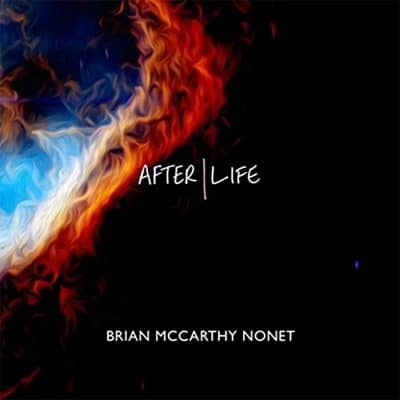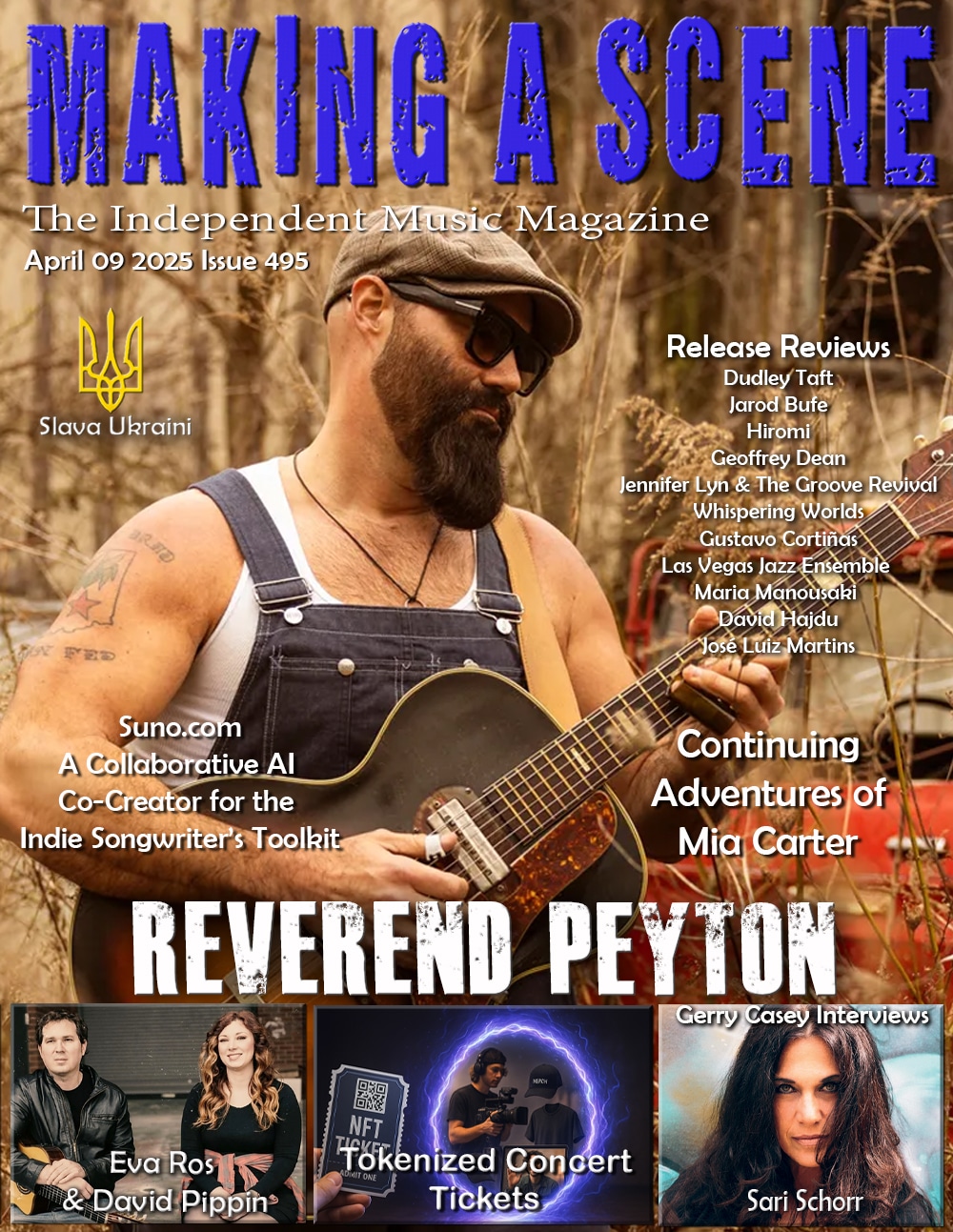Brian McCarthy AFTER|LIFE
 Brian McCarthy
Brian McCarthy
AFTER|LIFE
Truth Revolution Recording Collective
Saxophonist/composer Brian McCarthy reconvenes his nonet for AFTER|LIFE, the follow-up to his widely acclaimed 2017 The Better Angels of Our Nature with an entirely different concept and theme. While the predecessor explored the Civil War and its music, this one goes into the outer realms, as he contemplates the origins of the solar system and the cyclical nature of the universe. Yes, it’s a heavy concept but here’s just a glimpse into McCarthy’s thought patterns – “The nitrogen in our DNA, the calcium in our teeth, the iron in our blood, the carbon in our apple pies were made in the interiors of collapsing stars… We are all inevitably connected, even at a molecular level, no matter how different we might think we are.” With a composer thinking at these ambitious levels, it’s critical to assemble a band that can execute his ideas. Thus, all but one member of the Nonet returns from Better Angels, many of them collaborators since his days from his days at William Paterson University or in the band of legendary trumpeter Clark Terry. The group includes trumpeter and former teacher Bill Mobley, saxophonists Daniel Ian Smith, Andrew Gutauskas and Stantawn Kendrick, trombonist Cameron McManus, bassist Matt Aronoff, pianist Justin Kauflin and drummer Jared Schonig along with McCarthy on alto and soprano saxes. McCarthy’s musical and life partner, Linda Little, produced the effort, made possible by grants from the Vermont Community Foundation and the Vermont Arts Council. Cleverly, each nonet member has at least one solo opportunity in the project.
The opening strains of “Nebula” place the listener in the vast, boundaryless beginnings of the solar system, a suspended cloud of gas and dust depicted by dense piano chords and light, low register tones from the horns with gradual intensity that blossoms into “The Beginning,” signifying the building momentum as order begins to take shape from chaos. This is a lengthy 15-minute-long piece, giving room to each musician to state lines that range from energetic to thoughtful to downright aggressive, sometimes all within a single solo. Featured soloists are McCarthy on alto, Kendrick on tenor, and Kauflin on piano but we’d be remiss not to call out drummer Schonig’s kit work, which is key to continuity through the moving intervals. The nonet brings it to a grand finale. Chamber-like horns ease into “Flux,” representing the transfer and flow of energy as McCarthy on alto is the single soloist soaring above an orchestral bed than connotes a sense of orbiting movement. Orbiting becomes the focus of “Kepler’s Law,” named for the 17th Century German astronomer Johannes Kepler, the first to explain the planetary movements around the sun. To convey this, Bill Mobley blows a gentle melody on flugelhorn, almost like a warped down bugle call around Matt Aronoff’s sturdy bass line.
The thrust of this work is the three-part nearly 27-minute AFTER|LIFE Suite where McCarthy explores the start, evolution, ending, and restarting of life on this planet. The initial harmony and melody in Movement I repeat with growing intensity and complexity in the three movements. Movement I is the trial-and-error process of evolution, growing chaotic toward the end as the soloists, all on low end instruments (Kendrick, Gutauskas, and MacManus), perhaps to symbolize beastly, compete for the survival of the fittest. In Movement II, life has started and restarted several times, this reflecting such after one massive extinction, as the four soloists – Mobley on flugelhorn, McCarthy on soprano, Aronoff on bass and Kauflin on piano, go in different directions. Movement III is the bustling, fast-paced life of today conveyed by Mobley’s trumpet, Ian-Smith’s tenor, and Schonig’s drums.
The bonus track “Lucy” is effectively a postscript, named for NASA’s 2021 mission to study the formation of the solar system, which borrowed its name from our fossilized ancestor. The piece is built on the three-note motif that NASA sent out in a call to artists to create music inspired by the mission. McCarthy couldn’t resist such a challenge and he and pianist Kauflin took it home.
The imagery connoted through this work is brilliant, as if McCarthy were developing a score for a space odyssey film. Close your eyes and watch that imagined film in your mind as you listen.
- Jim Hynes
Buy Us a Cup of Coffee!
Join the movement in supporting Making a Scene, the premier independent resource for both emerging musicians and the dedicated fans who champion them.
We showcase this vibrant community that celebrates the raw talent and creative spirit driving the music industry forward. From insightful articles and in-depth interviews to exclusive content and insider tips, Making a Scene empowers artists to thrive and fans to discover their next favorite sound.
Together, let’s amplify the voices of independent musicians and forge unforgettable connections through the power of music
Make a one-time donation
Make a monthly donation
Make a yearly donation
Buy us a cup of Coffee!
Or enter a custom amount
Your contribution is appreciated.
Your contribution is appreciated.
Your contribution is appreciated.
DonateDonate monthlyDonate yearlyYou can donate directly through Paypal!
Subscribe to Our Newsletter
Discover more from Making A Scene!
Subscribe to get the latest posts sent to your email.














































